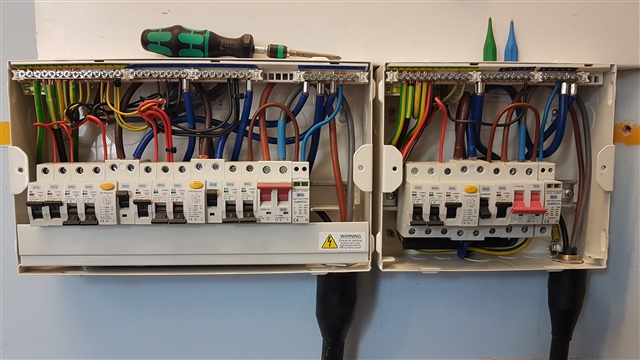Two new consumer units, peak and off-peak each remote from the intake with seventeen metre SWA distribution circuits.
The peak consumer unit will have Type A RCDs and a Surge Protection Device, is the off-peak consumer unit okay with a Type AC RCD and does it need another Surge Protection Device?
Andy.

